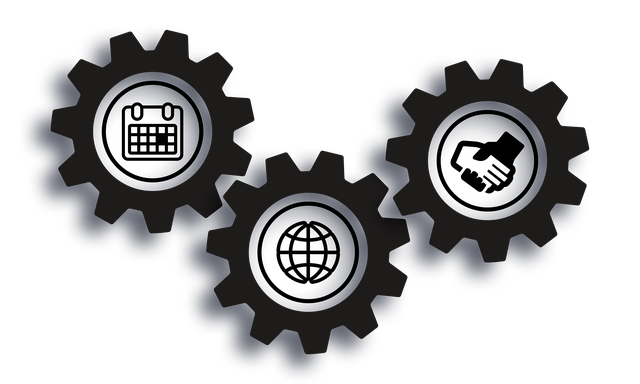Operational waste significantly hinders productivity and efficiency, driving up costs and lowering morale. 5S training, rooted in lean management principles, offers a systematic approach to combat this. The five steps – sorting, setting in order, cleaning, standardizing, and sustaining – empower employees to identify and rectify waste, enhancing workplace organization, boosting productivity, reducing errors, and improving job satisfaction through process standardization and continuous improvement.
In today’s competitive business landscape, minimizing operational waste is not just a best practice but a necessity. Understanding and addressing the root causes of waste, such as inefficiency, overproduction, and unnecessary motion, can significantly boost productivity and profitability. This article explores key strategies like 5S training, lean management techniques, and workplace organization for continuous improvement through process standardization. By implementing these practices, businesses can achieve streamlined operations, enhance quality, and maintain a competitive edge.
- Understanding Operational Waste: Causes and Impact
- The Role of 5S Training in Waste Minimization
- Lean Management Techniques for Efficient Processes
- Implementing Workplace Organization for Continuous Improvement
Understanding Operational Waste: Causes and Impact

Operational waste, often overlooked, can significantly hinder productivity and efficiency in any workplace. It manifests in various forms, from excess inventory and unused resources to inefficient processes and poor workplace organization. Understanding these causes is crucial for implementing effective solutions.
The impact of operational waste is far-reaching. It not only increases costs due to unnecessary expenses but also delays operations as employees navigate cluttered spaces and inefficient systems. This can lead to decreased morale, increased errors, and ultimately, lower quality products or services. Implementing strategies like 5S training and lean management principles are key to addressing these issues. These methods focus on workplace organization, process standardization, and continuous improvement, helping businesses eliminate waste and optimize their operations.
The Role of 5S Training in Waste Minimization

The Role of 5S Training in Waste Minimization
In today’s competitive business landscape, minimizing operational waste is a key driver for improving efficiency and reducing costs. One effective method that has gained significant traction is 5S training, rooted in lean management principles. This systematic approach focuses on organizing the workplace, standardizing processes, and continually improving operations to eliminate unnecessary steps and resources. By fostering a culture of discipline and mindfulness, 5S training empowers employees to identify and address waste at its source, be it excessive inventory, inefficient movement, or poorly designed workflows.
Incorporating 5S principles into the workplace involves five basic steps: sorting (identifying what is needed and removing unnecessary items), setting in order (arranging tools and equipment for easy access), shining (cleaning to maintain a tidy environment), standardizing (establishing clear procedures), and sustaining (continuing the cycle of improvement). This continuous improvement methodology not only enhances workplace organization but also leads to improved productivity, reduced errors, and enhanced job satisfaction. As organizations strive for operational excellence, 5S training serves as a powerful tool in their waste minimization arsenal.
Lean Management Techniques for Efficient Processes

Implementing Lean Management techniques is a powerful strategy to minimize operational waste and enhance overall efficiency. At the heart of this approach lies the renowned 5S training method, which focuses on creating a structured and organized workplace environment. This involves sorting (seiri), setting in order (seiton), shining (seiso), standardizing (seiketsu), and sustaining (shitsuke) work processes. By training employees in these principles, organizations can achieve remarkable improvements in productivity and reduce waste.
The 5S continuous improvement methodology encourages a culture of constant refinement. It promotes process standardization by identifying and eliminating non-value-added steps, reducing errors, and streamlining workflows. This not only improves workplace organization but also fosters a mindset where every action is examined for potential enhancements, contributing to a more sustainable and efficient operational model.
Implementing Workplace Organization for Continuous Improvement

Implementing workplace organization through 5S training is a powerful strategy for operational waste minimization and embracing lean management principles. This methodology involves sorting, setting in order, shining a light on (seiri, seiton, seiso), standardizing processes, and continually improving (shitsuke). By cultivating a culture of order and efficiency, organizations can eliminate unnecessary steps, reduce errors, and streamline workflows.
Workplace organization isn’t just about maintaining cleanliness; it’s a systematic approach to process standardization that empowers employees at every level. 5S continuous improvement ensures that operations remain agile, adaptable, and focused on delivering maximum value with minimal waste. This lean management technique translates into increased productivity, improved quality, and enhanced job satisfaction for workers.
By understanding and addressing operational waste through 5S training, lean management techniques, and implementing robust workplace organization, businesses can significantly enhance efficiency. These strategies promote process standardization and continuous improvement, leading to reduced costs, improved quality, and increased productivity. Embracing these practices enables organizations to create a more streamlined and sustainable operational environment.
